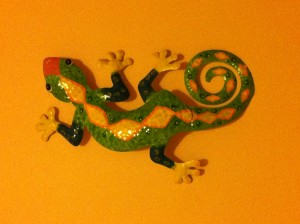Some of the best “gems” we get from our children are those moments before they go to sleep. Our children are still young enough to want five minutes with Mum or Dad at bed time. As frustrating and distracting as I sometimes find the task, once I lie down in the bed next to them and tune into their thoughts and ramblings, I am always grateful that I took the time.
In fact, these precious moments have been the inspiration for many of my blog posts here. This one is no exception… I lay down with my nine year old daughter last night at bedtime and the first thing out of her mouth was…
…”Mom, how many times do we blink in a day?”
Humans usually blink about 10 to 20 times a minute. A blink flushes the eye with fresh tears, supplying essential nourishment to maintain a healthy eye surface. This can refresh the eyes, clear away any dust and debris and prevent infection. Blinking can also brighten and refresh images received by the retina.
How long does a blink last?
A blink typically lasts about half a second. If you add all this up we actually have our eyes closed for at least 120 minutes a day. Blinking does serve the necessary purpose of moisturising the ocular surface but apparently the rate at which we blink exceeds the requirement for clearing the eye. So are there other reasons for this process?
Yes! Recent studies have shown that blinking also gives our brain a little “nap”, switching from cognitive to non-cognitive focus (from conscious focused mode to day-dreamy imagination mode), a “micro” respite from the task at hand. This process allows us to “reboot” and refocus!
Do women blink more than men?
When I mentioned to my husband that I was writing this blog on blinking he said “Oh, do you mean how women blink more often than men?” I went off, a little indignant to double check, and I am happy to report that this one is a myth. There is no discrimination between the sexes on blinking rate. Other factors, such as fatigue, environment and medication can of course effect how often we blink.
Blinking and social cues?
Although we tend to blink unconsciously we do still follow certain social cues or natural pauses. An interesting study observing an audience watching a short video found that they synchronized their blinking to occur at points in the video that required less attention or where they were less likely to miss something of importance.
During social conversation we are more likely to
time our blinking with pauses in speech, both for the person talking and, a second or two later, the person listening.
The frequency of blinking also depends on the particular type of social interaction and the emotional state of the person. Blink rate tends to increase after a lie has been told, for example, but remains unchanged when telling the truth. Stress, anger and anxiety also increase blink rate. People suffering from depression have exhibited faster blink rates as well as those with certain mental health issues.
What about blinking in other animals?
Some animals (such as the tortoise) blink their eyes independently of each other. Some have a very slow blink rate (such as cats and rabbits).When birds blink their lower eye lid comes up to meet the upper lid, in mammals it is the reverse.An interesting study conducted on the
blink behaviour of 71 different species of primates reported a correlation between primate size and increased blink rate. Of even more interest was the observation that blink rate increased in species that lived in larger greater group sizes and experienced more social interaction.
Blinking and Art…
I came across an
interesting reference to blinking while writing this blog that I thought it was worth sharing. It refers to the famous
Mona Lisa painting by
Leonardo da Vinci. The enigmatic face of Lisa Gherardini captured on the canvas has lead to centuries of speculation as to the secret behind her smile. It appears that
da Vinci used a layering and blurring technique that causes our eyes to re-adjust every time we blink, thus restarting the puzzling scrutiny of that mysterious expression.
 |
| The Mona Lisa – image source Wiki Commons |



